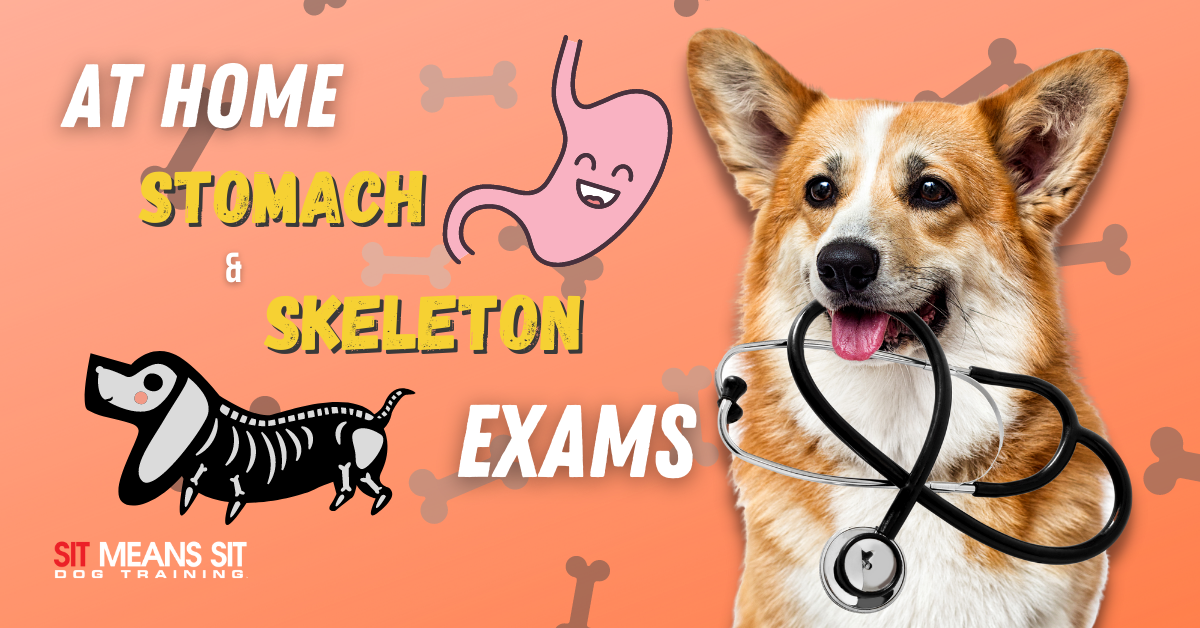
Examining Your Dog’s Stomach & Skeleton at Home
Being a great furball parent means being confident in taking charge of your dog’s health and wellness! All dog-parents want to give their pup the world, which means making sure they’re healthy enough to take it by storm. Being proactive about monitoring your dog at home can be essential to ensuring are in their best physical state. Read on for tips on how to examine your dog’s stomach and musculoskeletal at home!
Stomach Examination
The purpose of examining your pup’s stomach is to see how it should normally feel, search for any abnormal lumps and bumps, and to check the bones surrounding the stomach. To screen your dog’s stomach, gently, but firmly touch and feel around the belly area. Start examining in between the ribs, pressing your hands softly on the stomach (covering all parts of the belly). You will be feeling around for what is normal and checking to see if there are any changes to your pup’s stomach area. If your pooch has just eaten, their actual stomach will be a bit more enlarged in your examination. Through the exam, your dog’s stomach should be soft, never hard. A hard stomach is a clear indication of bloat which can be caused by a number of conditions and you should seek vet attention immediately.
Normal Stomach
- No feelings of lumps, masses, or bumps
- No signs of discomfort from examining the stomach with slight pressure
- No swelling/bloat
Abnormal Stomach
- Any and all feelings of lumps, masses, or bumps
- Any examination (by the fingers/hands pressing) that causes signs of discomfort like difficulty breathing or whining
- Any new markings on the stomach
- Hard, tense, or bloated stomach (a stomach that is not soft to the touch)
Skeletal Examination
Since you can’t scan your dog at home to check for any abnormalities with their musculoskeletal, here are tell-all signs that something is wrong and needs to be checked out ASAP:
- Limping in any leg or inability to use a limb (Can be caused by joints, soft tissue, the bone itself, or tendons/ligaments)
- Chronic limping or inability to use limp despite medicine (Could be a sign of Osteosarcoma)
- Paralysis or inability to functionally move hind legs (Caused by a number of different conditions like herniated disk or infection)
- Recurring or shifting limpness in legs, pain, and fever (Usually in a young dog, caused by Panosteitis)
- Limp tail “Limber/Cold Tail” (Could be normal recovery or sign of disease like spinal cord disease)
Performing a simple at-home physical and observations can help you tune into your dog’s well-being! You’ll be able to determine what is normal and what needs medical attention. Consult your vet about any abnormalities you find and be sure to do monthly at-home exams!
